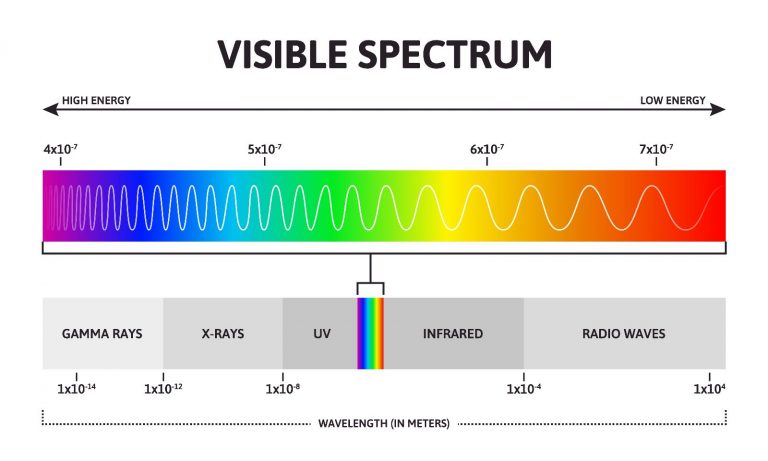Key Takeaways
- Optical filters like Longpass, Shortpass, Bandpass, Multi-bandpass, Notch, and Neutral Density are essential for controlling wavelength ranges in diverse applications.
- The electromagnetic spectrum comprises Gamma rays, X rays, UV, visible light, IR, and radio waves.
- Human eyes perceive colors in visible light (380-780nm), while optical filters play a vital role in manipulating light for diverse purposes.
Understanding the Electromagnetic Spectrum and Human Vision
The electromagnetic spectrum encompasses a broad range of wavelengths, including Gamma rays, X rays, ultraviolet, visible light, infrared, and radio waves, arranged in order from shorter to longer wavelengths. Despite this extensive spectrum, our eyes are restricted to detecting visible light, which spans from 380 to 780nm in wavelength. Consequently, these variations in wavelength translate into visible light appearing as an array of distinct colors to the human eye.

Exploring the Diversity of Optical Filters in Design and Manufacturing
In the optical field, an optical filter stands out as one of the most prevalent components in design and manufacturing. The selective transmission of specific wavelengths and the blocking of unwanted light are accomplished through the utilization of optical filters. These filters, available in a variety of designs, include:
Longpass filters,
designed to transmit wavelengths above a specified value, exclusively allow longer wavelengths to pass while blocking shorter ones. Notably, these filters exhibit a sharp cut-on, gradually approaching zero transmission in the blocking range and nearing 100% transmission in the passband.

Shortpass filters, contrasting with longpass filters, exclusively permit the passage of shorter wavelengths while obstructing longer ones. In contrast, they exhibit a sharp cut-off, gradually approaching zero transmission from the high transmission end.

Bandpass filters, in essence, can be seen as a fusion of longpass filters and shortpass filters. These filters exhibit high transmission within a specified wavelength range while effectively blocking all other wavelengths.

Multi-bandpass filters, can be regarded as duplication of bandpass filters, which have high transmission for multiple wavelength regions;

Notch filters, alternatively known as band stop filters, serve to obstruct a designated wavelength range while permitting the transmission of light on either side of that range. Notably, the shape of the curve on a wavelength–transmission chart resembles a V.

Neutral density (ND) filters, conversely, serve to uniformly diminish the intensity of all wavelengths, ensuring the preservation of color integrity. Notably, a prevalent application of ND filters is discovered in photography. Once attached in front of the lens, an ND filter provides photographers with precise control over the light reaching the sensor. This empowerment enables photographers to finely adjust various specifications, thereby preventing overexposure and ultimately producing superior results in photos.

Typical Applications of Optical Filters
Optical filters find extensive applications across various fields, encompassing photography, optical instruments, color lighting, astronomy, and fluorescence microscopy and spectroscopy. Illustratively, fluorescence filters enhance fluorescence microscopy systems. Additionally, laser line filters are employed in laser devices to prevent distortion and enhance image contrast. Raman filters play a crucial role in Raman spectroscopy, and machine vision filters are utilized in machine vision camera and sensor applications to enhance image contrast.
GREAT ARTICLE!
Share this article to gain insights from your connections!







